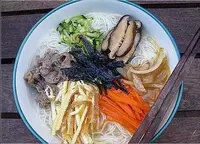The korean

The Korean Peninsula is located in eastern Asia and is currently divided into two separate states. On the one hand, the Democratic People's Republic of Korea (DPRK) and Koreans who call themselves Joseon Saram.
On the other hand, the DPRK's neighbor Republic of Korea and Koreans who call themselves Hanguk Saram. Koreans who live in the Far East have been given the name Kore Saram or Kore people.
The once unified state of Kore (later Korea) ceased to exist in the early 20th century, when the Russo-Japanese War ended. Japan entered the lands of the Korean Peninsula and proclaimed Korea as its colony. Japanese colonists ruled as yet a united Korea until 194
5.
After losing to Japan in World War II, the USSR and the United States signed an agreement according to which one part of the Korean Peninsula falls under the influence of the Soviets, and the second to the Americans.
The rapid development of Korean history and the influence of different countries and peoples could not but affect the recipes for Korean cuisine. Interestingly, with territorial separation, most Korean cuisine is also prepared in North and South Korea.
In a single Korean cuisine, as in most Asian countries, spices and spices are often used in the preparation of dishes. Red hot pepper is a must-have ingredient in Korean dishes. It was Portuguese missionaries who brought red pepper with them to Korea back in the 16th century. Since that time, in Korean, the word tasty and sharp has become a single concept.
In addition to hot peppers, Koreans season their food with soy sauce or "kanjan, " soy paste "kochhujan" or "twenjan, " a seasoning made from pressed soybeans. The Kore or Kore Saram people make extensive use of coriander in their recipes. This ingredient gives salads an extraordinary and memorable taste.
Japan and its culinary traditions had a great influence on Korean cuisine recipes. Japanese settlers taught Koreans to eat fish and seafood. And now many dishes of Korean cuisine use fish, including raw. The neighborhood with China has also left its imprint, Koreans are very fond of pork.
South Korea's religion is Buddhism, and North Korea has proclaimed a rejection of religion and many of its inhabitants are atheists. Therefore, in one and the other Koreas it is not forbidden to eat meat in any quantities. Koreans have a rice head and therefore the basis of the basics of all Korean cuisine. Translated from Korean, the question "how are you? " means "did you eat rice today? "
It is customary to serve the table for Korean meals as follows: each guest is served rice in a separate piano, and a variety of snacks or panchang are placed nearby. The types and number of snacks depend only on the culinary customs of the individual region of the Korean Peninsula.
Among the main and obligatory panchkhans can be distinguished - kimchi, sauerkraut Peking cabbage with spicy burning red pepper. Naml are vegetables that are roasted, marinated or blanched with sesame oil and vinegar. Pokkym is a snack based on lightly fried ingredients (pork, squid). Chorim is a snack of soy curd that is cooked in broth with the addition of sesame oil and garlic.
We think many have heard that dogs eat meat in Korea. There are even special markets, coming to which you can buy whole carcasses of dogs of various breeds. The Koreans themselves have long been divided into two camps.
The former stand in solidarity with animal advocates and consider the consumption of dog meat unacceptable. To which dog lovers answer that they see nothing wrong with making the national Posinthan soup from dog meat. Around the world, it is customary to eat pig, cow or horse meat, and what is worse for dogs?
 Español
Español Français
Français Português
Português Русский
Русский 简体中文
简体中文 繁體中文
繁體中文 日本語
日本語 한국어
한국어 العربية
العربية Türkçe
Türkçe Қазақ
Қазақ Deutsch
Deutsch Italiano
Italiano Українська
Українська
